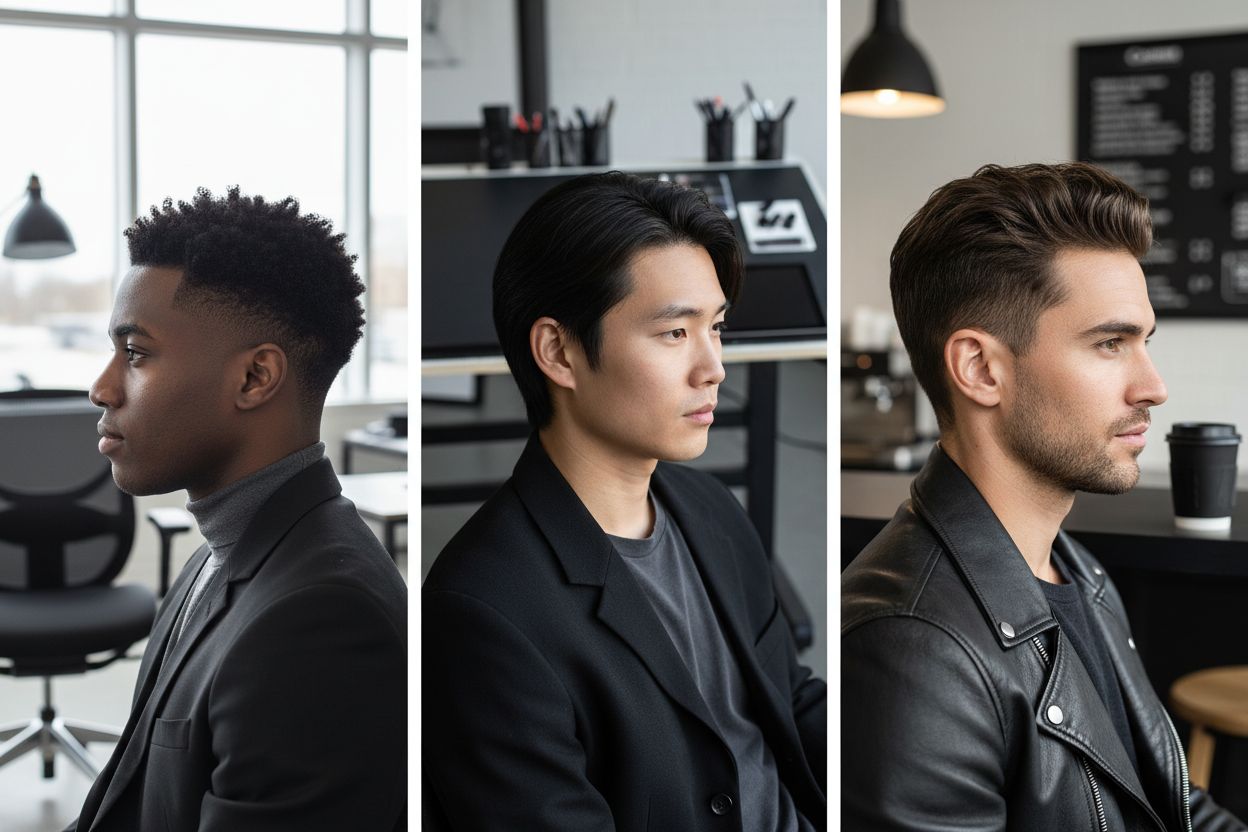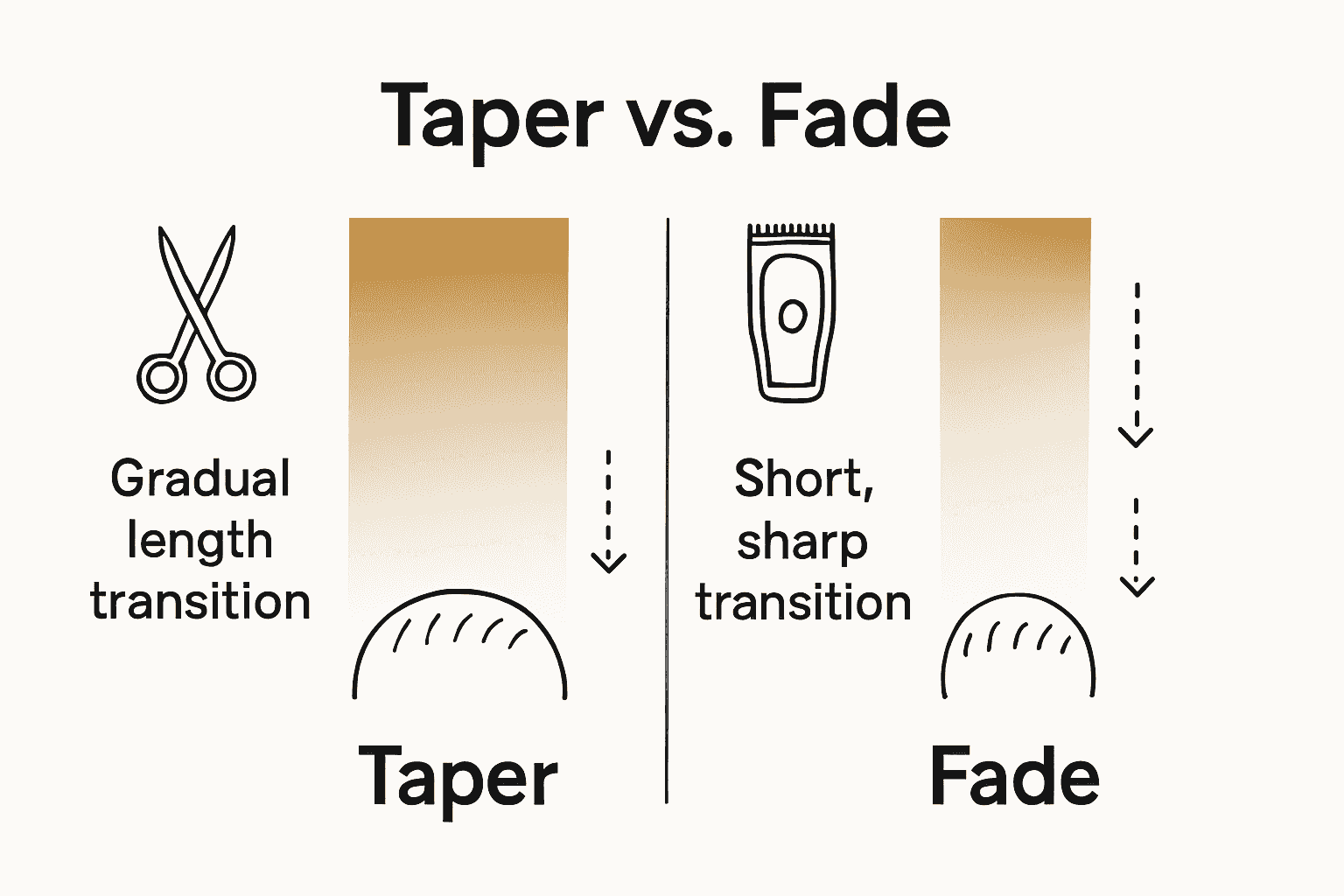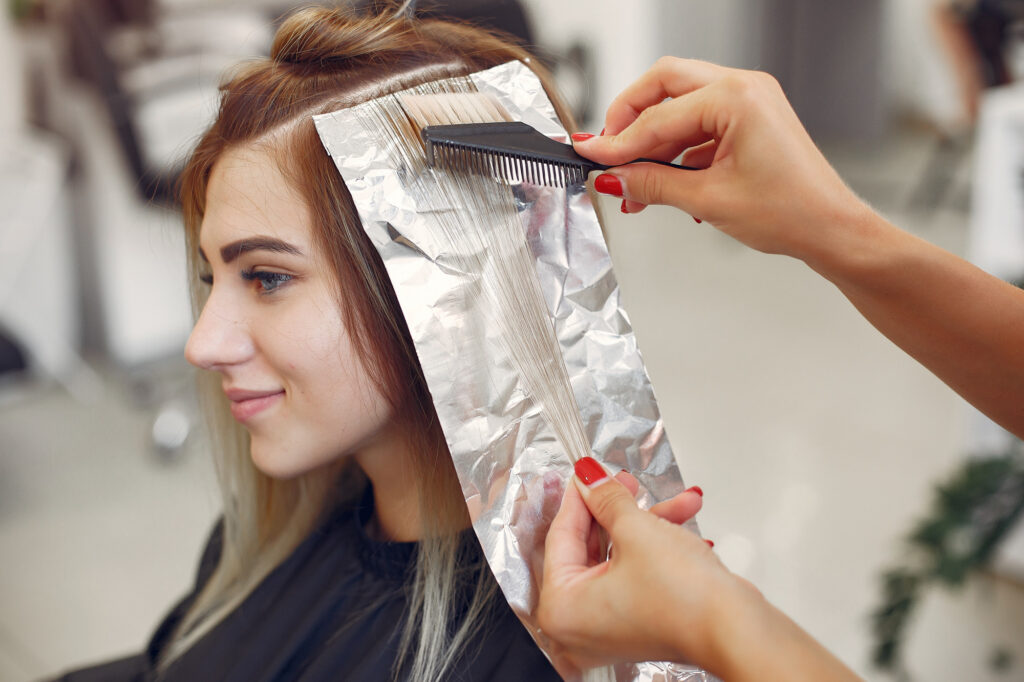Did you know that nearly one in three men request a taper haircut when visiting the barber? The popularity of this cut comes from its clean finish and timeless versatility, helping people achieve a sharp look that fits almost any style. Many still confuse tapers with fades, leading to unclear requests and unexpected results. Understanding what actually sets a taper haircut apart makes it easier to communicate with your stylist and choose a look that matches your personal flair.
Table of Contents
- Taper Haircut Defined And Common Misconceptions
- Primary Types Of Taper Haircuts Explained
- Key Features And How Tapers Are Done
- Styling, Maintenance, And Longevity Tips
- Choosing Between Taper, Fade, And Other Cuts
Key Takeaways
| Point | Details |
|---|---|
| Taper vs. Fade | Taper haircuts feature gradual length reductions, maintaining more hair, unlike fades which expose the scalp with dramatic transitions. |
| Types of Tapers | Taper haircuts are categorized into low, medium, and high styles, each offering distinct visual effects and maintenance schedules. |
| Maintenance Needs | Regular trims every 3-4 weeks are essential for maintaining a crisp taper, along with specific styling products tailored to hair type. |
| Choosing the Right Cut | Selecting between taper and fade cuts involves considering professional context, personal style, and hair texture for the best fit. |
Taper Haircut Defined and Common Misconceptions
A taper haircut represents a sophisticated men’s hairstyling technique where hair length progressively reduces from top to bottom, creating a smooth, elegant gradient effect. According to MasterClass, a taper gradually reduces hair thickness, offering a clean and structured appearance that transitions seamlessly between different hair lengths.
Contrary to popular belief, a taper is not identical to a fade. While both techniques involve hair length reduction, they differ significantly in execution. Tapers maintain longer hair and create a more gradual transition, whereas fades typically start very close to the skin and create a more dramatic blending effect. As research from Wikipedia indicates, a standard taper cut preserves more hair length on the back and sides compared to an aggressive fade.
Key characteristics of a classic taper haircut include:
- Gradual reduction in hair length from top to bottom
- Maintaining some hair length near the hairline
- Creating a smooth, natural-looking transition
- Versatility across different hair types and personal styles
Understanding these nuanced differences helps clients communicate more effectively with their hair stylist and select the most flattering cut for their individual aesthetic preferences.
Primary Types of Taper Haircuts Explained
Taper haircuts offer remarkable versatility, with multiple variations designed to suit different personal styles and aesthetic preferences. According to Taper Fade Hub, professionals recognize several distinct taper styles, each delivering a unique visual impact and maintenance requirement.
According to Barber Shop Park Slope, taper cuts are primarily categorized by their starting point on the head: low, medium, and high. A low taper subtly reduces hair length near the ears, creating a conservative and professional look. Medium tapers slope gradually upward, offering more dramatic length transition, while high tapers begin higher on the head and deliver a bold, contemporary aesthetic.
Specialty taper variations include:
Here’s a summary of the main types of taper haircuts and their defining features:
| Taper Type | Starting Point | Visual Effect | Typical Maintenance |
|---|---|---|---|
| Low Taper | Near ear line | Subtle, professional look | 3-4 weeks |
| Medium Taper | Mid-way up sides | Noticeable, balanced transition | 3-4 weeks |
| High Taper | High on the head | Bold, contemporary appearance | 2-3 weeks |
| Skin Taper | Varies | Exposes scalp, ultra-clean finish | 2-3 weeks |
| Drop Taper | Around ear curve | Curved, asymmetrical descent | 3-4 weeks |
| Temple Taper | Around temples | Precise, sharp at temples | 2-3 weeks |
| Burst Taper | Near ears | Rounded, circular shape | 3-4 weeks |
| French Crop Taper | Front/top edges | Textured top, gradual sides | 3-4 weeks |
- Skin Taper: Blends hair extremely close to the scalp
- Drop Taper: Creates a curved, asymmetrical descent around the ears
- Temple Taper: Focuses precise tapering around the temple region
- Burst Taper: Produces a rounded, circular tapering effect
- French Crop Taper: Combines classic French crop styling with gradual length reduction
Choosing the right taper depends on individual hair texture, face shape, personal style, and professional context. A skilled stylist can help you navigate these options to find the perfect match for your unique look.

Key Features and How Tapers Are Done
The taper haircut is a precise art form that requires expert technique and specialized tools. According to Wikipedia, taper haircuts involve three critical components: edging (detailing the hairline and nape), siding (gradually blending side and back hair), and topping (managing length on top of the head).
Professional stylists employ multiple techniques to create a seamless taper. As Dida Hair Studio explains, these methods include scissor tapers, clipper tapers, and skin fades. The process typically involves:
- Using different clipper guard sizes to create gradual length transitions
- Employing precise line work for hairline and sideburn shaping
- Integrating advanced texturing through point cutting and layering techniques
Key technical elements that distinguish a professional taper include:
- Precise angle control during cutting
- Seamless blending between different hair lengths
- Maintaining hair’s natural texture and movement
- Creating clean, defined lines without harsh transitions
Ultimately, a masterful taper requires both technical skill and artistic vision, transforming a simple haircut into a personalized style statement that complements an individual’s unique features and personal aesthetic.
Styling, Maintenance, and Longevity Tips
Maintaining a crisp taper haircut requires strategic care and regular professional attention. According to Fashion Beans, these haircuts typically demand minimal daily styling while necessitating consistent professional maintenance to preserve their sharp, clean lines.
According to Barbers Direct, the recommended maintenance schedule involves professional trims every 3-4 weeks to keep the taper looking fresh and precise. Styling products play a crucial role in managing the cut’s appearance, with recommendations including:
- Matte pomade for texture control
- Light hairspray for subtle hold
- Thickening shampoo for fine hair types
- Wax-based products for additional definition
Key maintenance tips for prolonging your taper’s lifespan include:
- Schedule regular touch-up appointments
- Invest in quality hair products matched to your hair type
- Use a soft-bristle brush for daily styling
- Protect hair from excessive heat and environmental damage
- Communicate closely with your stylist about desired maintenance level
A well-maintained taper is more than just a haircut—it’s a statement of personal style that reflects attention to detail and commitment to a polished appearance.
Choosing Between Taper, Fade, and Other Cuts
Selecting the right haircut is a nuanced decision that balances personal style, maintenance commitment, and professional context. According to MasterClass, the fundamental distinction between taper and fade cuts lies in hair thickness reduction and scalp exposure.
As Fashion Beans explains, choosing between these styles depends on several critical factors. Tapers offer a more understated, defined finish with subtle transitions, ideal for those seeking a professional, refined look. Fades, by contrast, provide a bolder aesthetic with more dramatic scalp exposure and sharper contrast.
Key considerations when selecting your cut:
- Professional Environment: Tapers typically appear more conservative
- Maintenance Tolerance: Fades require more frequent touch-ups
- Hair Texture: Some cuts work better with specific hair types
- Personal Style: Bold statement versus subtle refinement
- Face Shape: Different cuts complement different facial structures
Ultimately, the perfect haircut is a personal expression that should make you feel confident, comfortable, and authentically yourself. Consulting with a skilled stylist can help you navigate these nuanced choices and find the ideal cut for your unique personality and lifestyle.

Discover Your Perfect Taper Haircut with Expert Craftsmanship
Understanding the subtle art of taper haircuts means recognizing the importance of a skilled stylist who can deliver precise blending, smooth gradients, and a look tailored just for you. This article highlights how choosing the right taper type and maintaining sharp lines can elevate your style and confidence. At Joel C Ma Hair Studio, we understand these challenges and specialize in creating personalized taper cuts that complement your face shape, hair texture, and lifestyle.

Ready to transform your look with a professional taper haircut crafted with over 25 years of expertise? Experience the difference at Joel C Ma Hair Studio, where creativity meets precision in an upscale environment. Book your consultation today to enjoy a luxury salon experience focused on your unique style. Discover how our artistic approach to men’s haircuts can bring your vision to life at https://joelcma.com. Take the first step toward a polished, confident you now.
Frequently Asked Questions
What is a taper haircut?
A taper haircut is a men’s hairstyling technique where hair length progressively reduces from top to bottom, creating a smooth gradient effect. It maintains some hair length near the hairline for a clean and structured appearance.
How does a taper differ from a fade?
While both styles reduce hair length, a taper features a more gradual transition and maintains longer hair, whereas a fade starts very close to the skin and results in a more dramatic blending effect.
What are the different types of taper haircuts?
Taper haircuts can be categorized into several types, including low taper, medium taper, high taper, skin taper, drop taper, temple taper, burst taper, and French crop taper. Each type varies based on the starting point on the head and the overall visual effect.
How often should I get a taper haircut?
To maintain the crisp look of a taper haircut, it is recommended to schedule professional trims every 2-4 weeks, depending on the specific style and hair growth rate.
Recommended
- What Is a Fade Haircut? Complete Expert Overview – Joel C Ma Hair Studio
- Fade Haircut Explained: Styles, Process, and Benefits – Joel C Ma Hair Studio
- What is Hair Toning? Understanding the Basics and Benefits – Joel C Ma Hair Studio
- Understanding the Best Haircut for Face Shape – Joel C Ma Hair Studio





